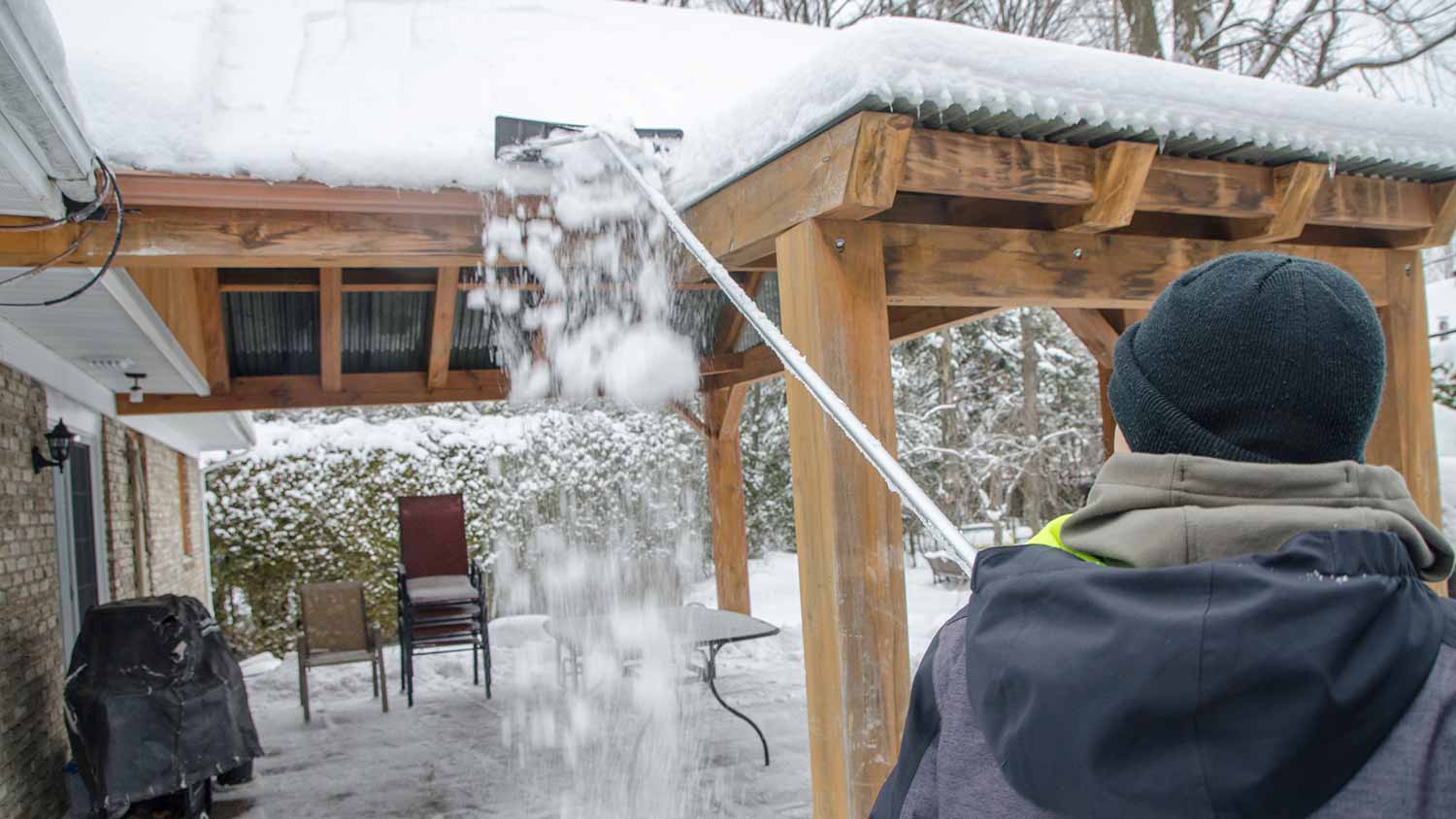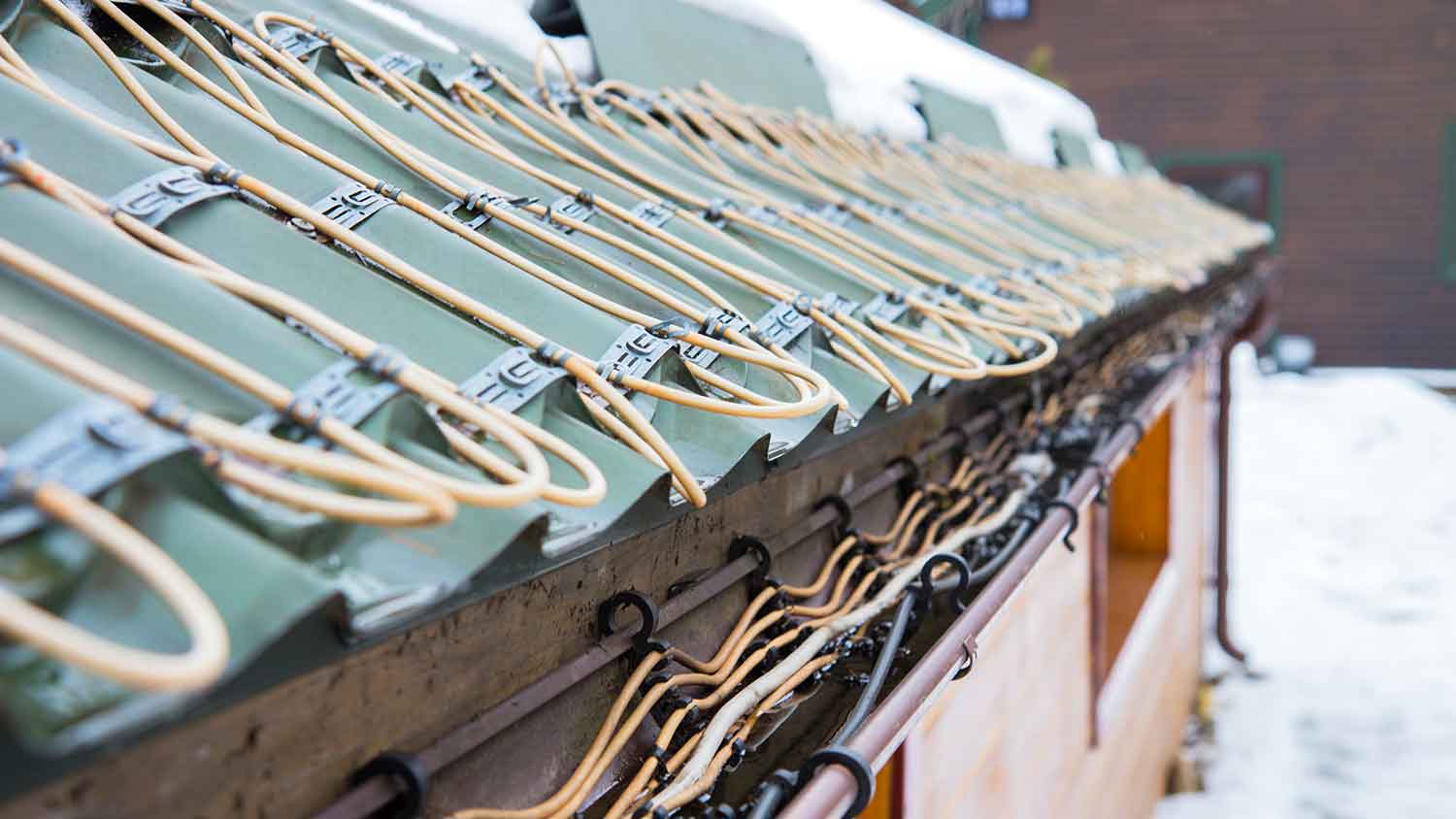
Discover the average cost of roof snow removal, key price factors, and ways to save. Get transparent estimates to protect your home this winter.
Icicles are pretty—pretty dangerous, that is


Shiny, beautiful icicles hanging from the edge of your roof may make you feel like you're in a winter wonderland. But that wonderland can quickly transform into a nightmare as the icicles wreak havoc on your gutters or fall on passersby below. If you want to know how to prevent icicles on your roof, you're in the right place. These tips will help keep icicles to a minimum.
Insulating your attic is essential to winterizing your roof and preventing icicles. The attic is the space directly under the roof. If the warm air from inside your home creeps up into the attic, it heats up the roof, causing any snow or ice on top to melt.
As that snow or ice melts, it trickles down the roof, falling off of the edge. There, it refreezes (if outside temperatures are still below 32 degrees Fahrenheit), forming icicles. However, when your attic is insulated, it will keep the roof from warming too much. This means there's less risk of snow and ice melting and icicles forming. A local insulation installer can help you out with attic insulation before winter.
Along with insulation, your attic needs good airflow to keep icicles to a minimum. Without proper ventilation, moist air can get into the attic during the winter and stay there. The humid air can cause ice dams to form on the roof, from which icicles can hang.
When you ventilate your attic, you give that warm, moist air an escape route. Instead of building up below your roof, it exits through the soffits and eaves, making ice dams and icicles less likely to form.
Gutters give water a path to follow away from your roof and home. Ideally, your gutters will be clean and clear of leaves and debris, so water can flow freely. If you need another reason to make gutter cleaning a regular part of your home maintenance, here's one: Doing so will help to prevent icicles.
When the gutters are full of debris, water doesn't move as easily through them. Instead, it pools and collects, and when it's cold enough, freezes. Frozen gutters can make ice dams more likely to form, which also makes icicles more likely. So, for best results, clean your gutters, or hire someone else to do it before winter weather begins.

If possible, don't let snow linger on your roof after a winter storm. Beyond preventing icicles, there are a few reasons to clear away the snow as quickly as possible. Doing so reduces the strain on your roof and can help prevent leaks.
If your roof is low enough, you can try to remove the snow yourself using a roof rake. Always stand to the side when using the rake so that the snow doesn't fall on you. Another option is to hire a local roof cleaning company to do the job for you. A snow removal company may be a particularly good idea if your home is more than one story.
Warm air from the attic isn't the only thing that causes icicles to form. Warm air can also escape from around your chimney or any air vents, such as from your dryer or HVAC system. Sealing around those vents will help to keep the warm air away.
You may have seen special products, such as roof melt tablets or roof heating cables, which claim to solve your ice dam and icicle problems. While these products can help to melt snow or ice from your roof, they aren't a perfect solution, and they may cause more harm than good in some cases.
Roof melt tablets often contain salt, which can damage roofing materials or harm pets or landscaping. Roof heating cables must be professionally installed by a local roofer to function properly and can skyrocket electricity bills.
A more effective, and long-term, solution to your icicle problem is to insulate and ventilate your attic and keep up with gutter maintenance.
From average costs to expert advice, get all the answers you need to get your job done.

Discover the average cost of roof snow removal, key price factors, and ways to save. Get transparent estimates to protect your home this winter.

Discover the average roof heating cable installation cost, key price factors, and how to budget for your project. Learn how to save and what to expect.

Knowing the signs of an ice dam on your roof can help prevent serious damage. Learn what to look for to spot a problem early.

Wondering why icicles form on your roof? Learn the underlying problems, why you need to take action, and the solutions you can implement to fix the issue.

Should I remove snow from my roof? This is a common question for homeowners during the colder months. Find out when and how to tackle the job safely this winter.

An ice and water shield can protect your roof and save you the headache of premature roof replacement. Learn everything you must know about the shield.